- 28
- Jun
Microcrystalline Wax – Chemical Structure , Performance Characteristics, Application , Technical Indicators, China Candles Factory
Product Description
Origin: China, Sinopec
Source: Like paraffin wax, microcrystalline wax is also formed after refining procedures such as distillation, crystallization and deoiling during petroleum processing completed.
Purity:
After a state-of-the-art purification process – high pressure hydrofinishing, our microcrystalline waxes are virtually free of impurities and contamination dye. The high degree of hydrogenation ensures its high purity and meets the requirements of purity regulations, including global pharmacopeia specifications, food specifications for additives, food packaging, and cosmetic production standards.
Chemical Structure:
Microcrystalline wax is a multi-molecular mixture composed of various saturated hydrocarbon components. Unlike paraffin wax, microcrystalline wax contains more isoparaffins and naphthenes with long chain branches.
Performance Characteristics:
Microcrystalline Soft Waxes 7835 and 3971 are part of a line of premium microcrystalline waxes for the candle industry with the following characteristics:
1. Low melting point and shrinkage rate are very suitable for the formula system of cup wax;
2. The rich branched structure helps the candle to lock oil and control flowers;
3. Higher viscosity can add a higher proportion of palm wax to the candle formula and reduce costs;
4. Excellent flexibility can make high-quality modeling candles and carved candles;
5. Can handle the candle wick to prevent the finished wax thread from bursting and breaking.
Certification:
Cosmetics: Cosmetics Regulation, EU Cosmetics Regulation (No. 1223/2009)
Personal Care: Recommended Size 14 Lip and Oral Care Products .
Food additives: Germany (BfR Recommedation XXV.), European Union (PM Ref.No.95859; E905), United States (FDA 172.886)
Pharmacy: EU (monograph planned), Germany (DAC/Deutscher Arzneimittel-
Codex), USA (USP XXXI/NF 26: Microcrystalline wax)
Application :
Microcrystalline waxes are known for their variety of uses. Can be used as craft candles, Vaseline, cosmetics, sludge, shoe polish, ink, explosive compound wax, mortar for building materials, master batch processing, blending of special waxes, anti-rust wax, automotive wax, emulsifying wax, polishing wax, floor wax, electronic wax , Glazing wax, protective agent, coating agent, thickener, basic raw material of lubricant.
Comprehensive studies have shown that microcrystalline wax is absolutely safe for use in the food industry and is approved for use as a food additive according to the EU’s E905 grade standard. In personal care, this certification means that microcrystalline waxes can be used directly in chewing gum bases, lip care products (recommended by COLIPA), coatings, mold release agents, and more. In other regions, FDA standards also apply. In cosmetic and pharmaceutical formulations, microcrystalline waxes are used as inactives for other ingredients such as petrolatum to increase the lipid phase of emulsions and ointments. They are used to improve oil absorption and stability to match the hardness of the formulation, or for hard, uniform tough grease components with low crystallinity. Microcrystalline waxes can improve the structure and hardness of beauty sticks such as lipsticks without excessive crystallization.
Add a small amount of microcrystalline wax to paraffin, its permeability is not affected. Usually, even if a small amount of other additives are added, the wax base will become opaque; adding a small amount of microcrystalline wax to paraffin can also improve the release of liquid flavors, positively affect wax crystallization, and reduce and Avoid undesired snowflake effects; adding microcrystalline wax to the cup wax base will make the base stick better to the cup.
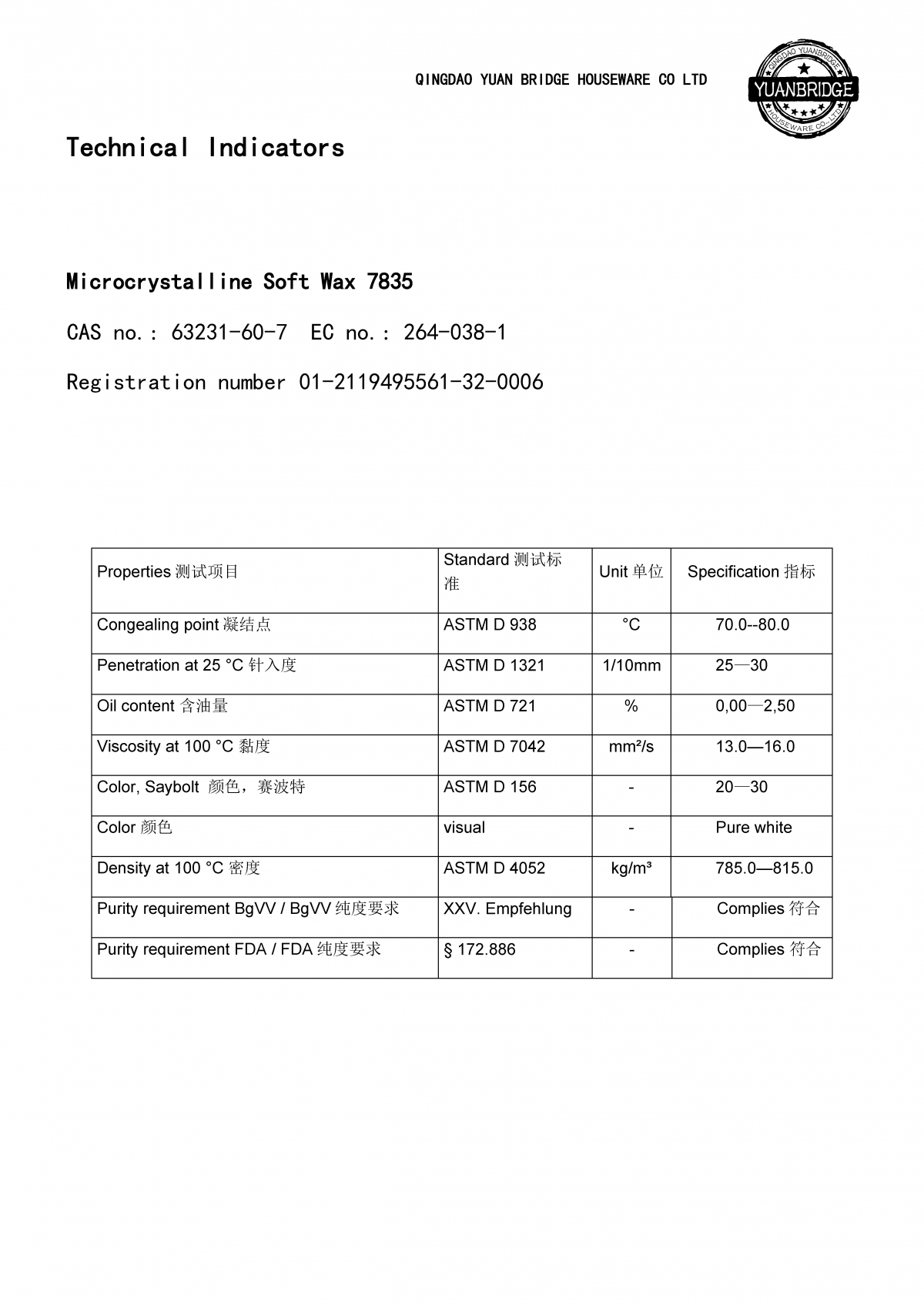
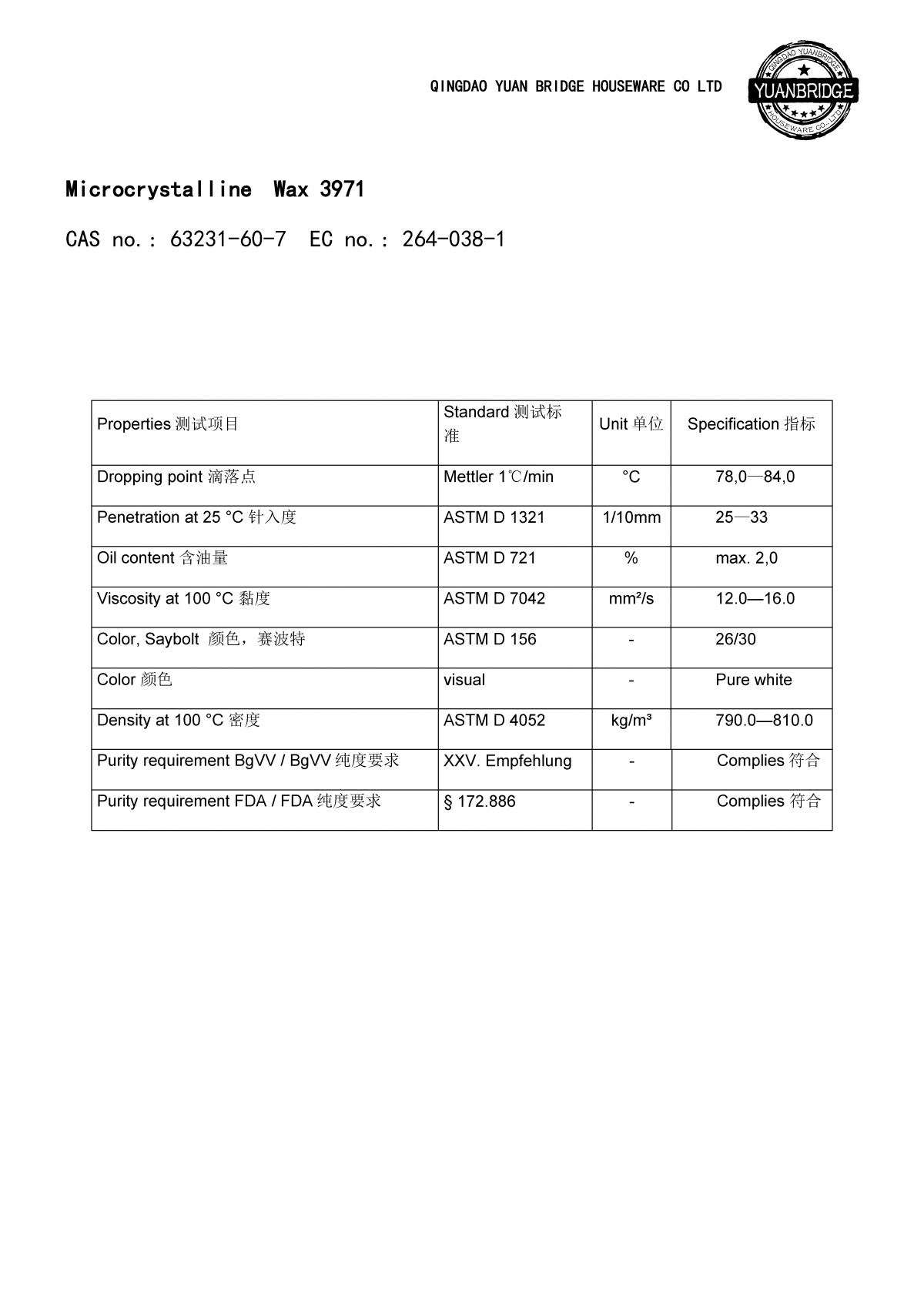
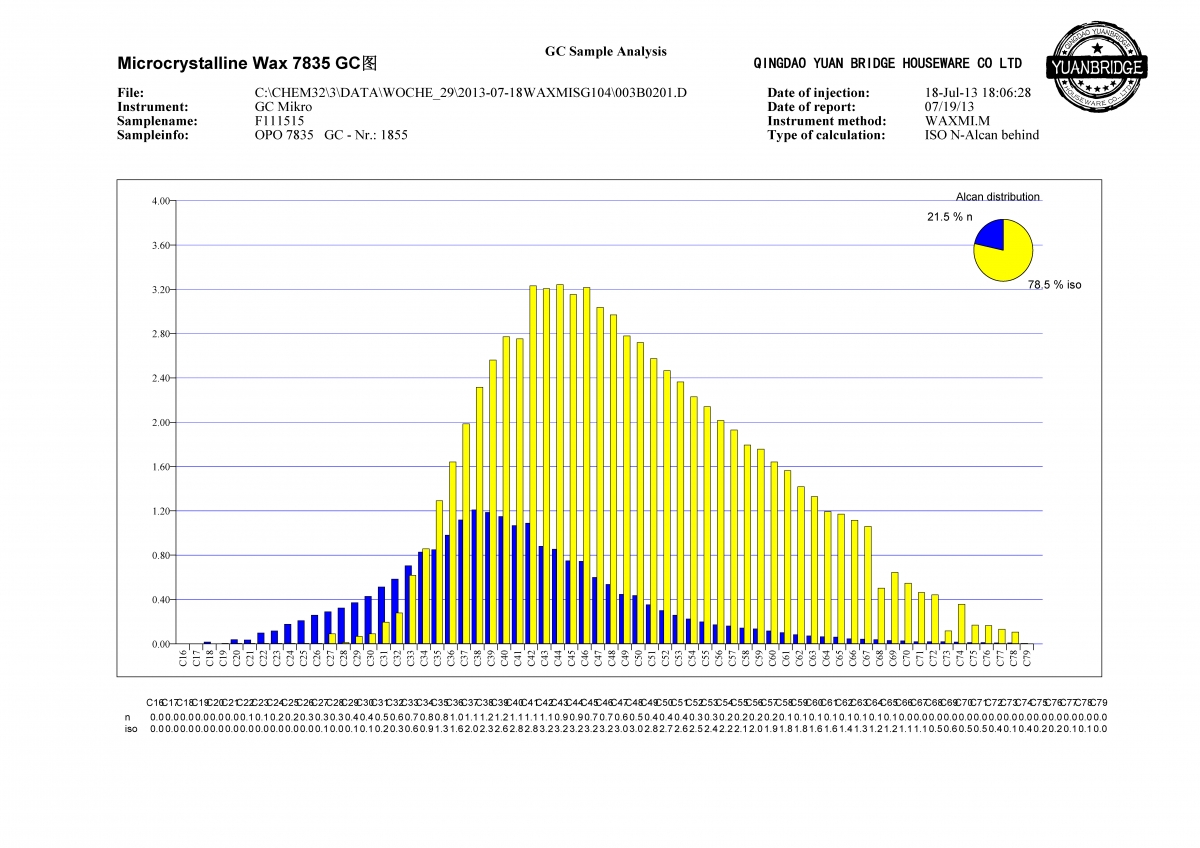

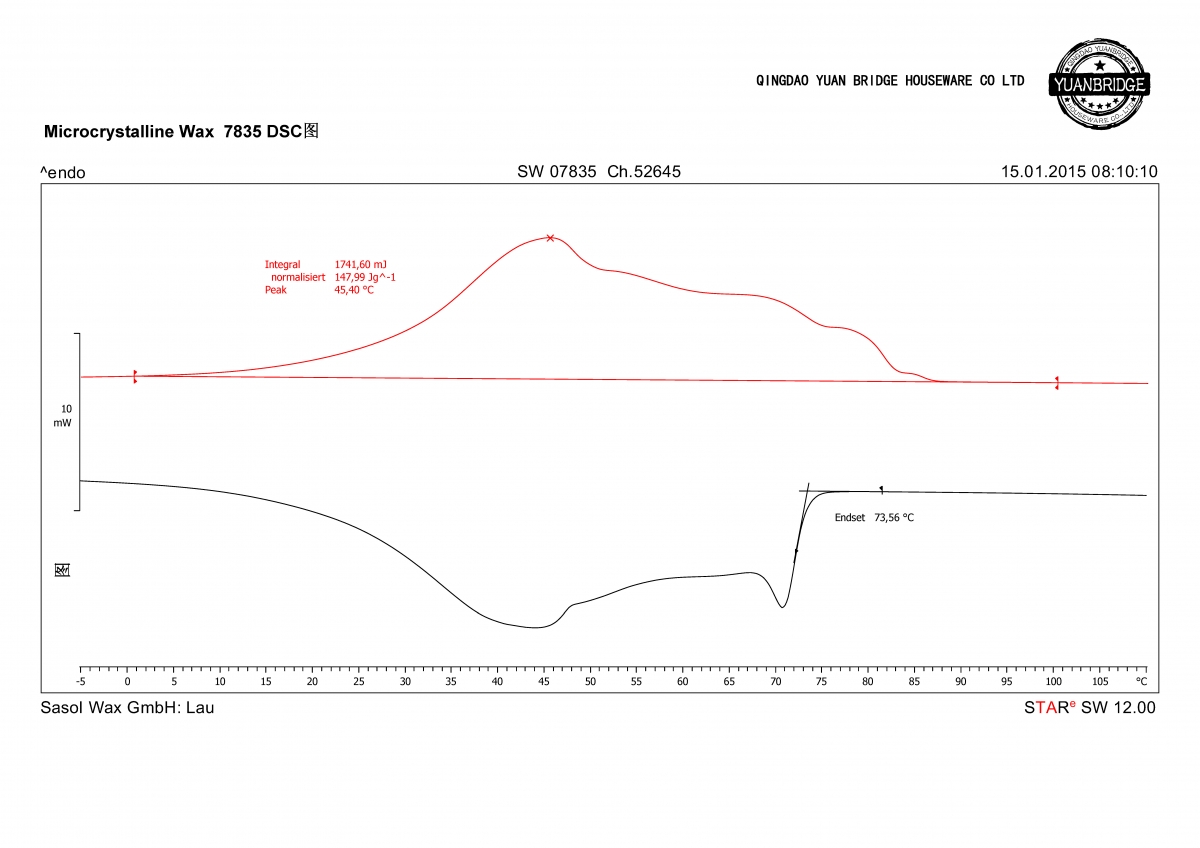
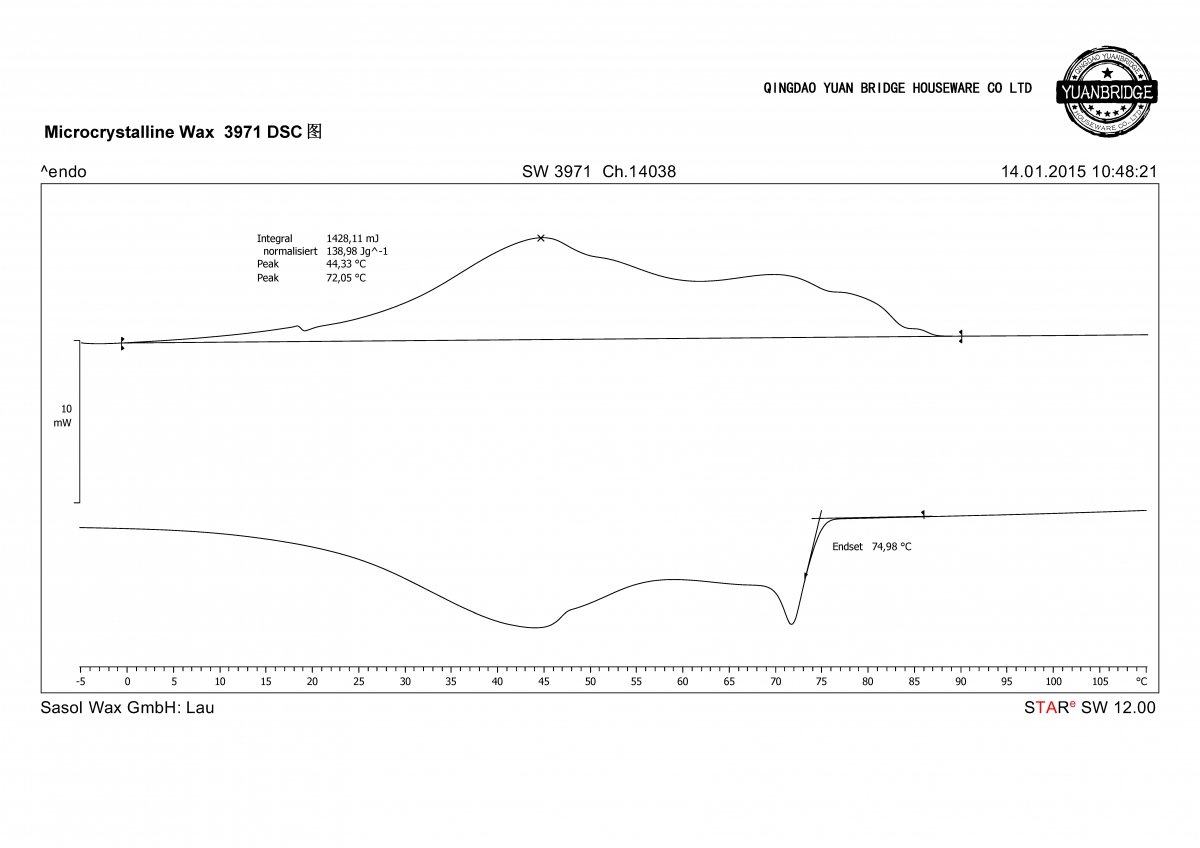
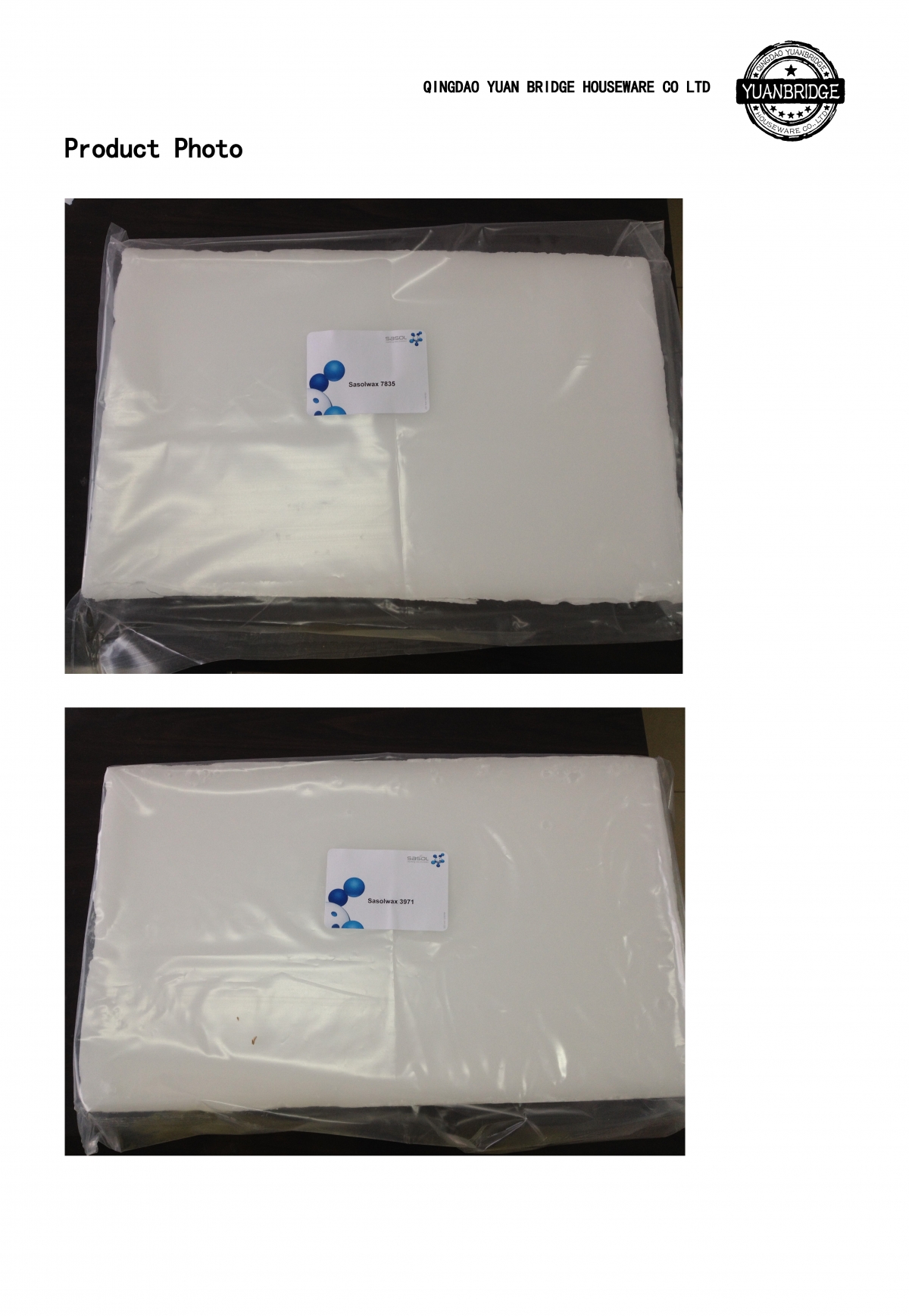
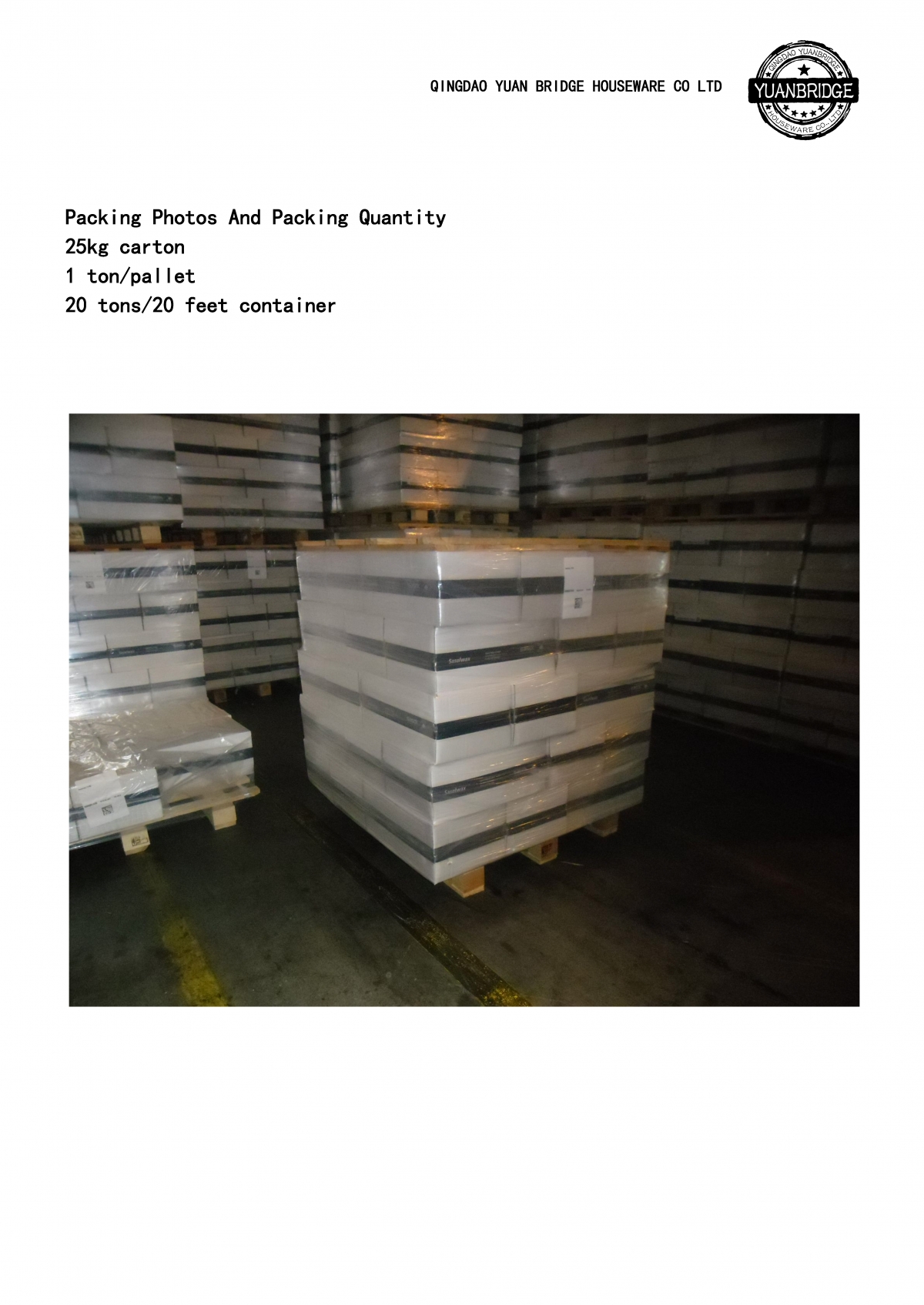
QINGDAO YUAN BRIDGE HOUSEWARE CO LTD
